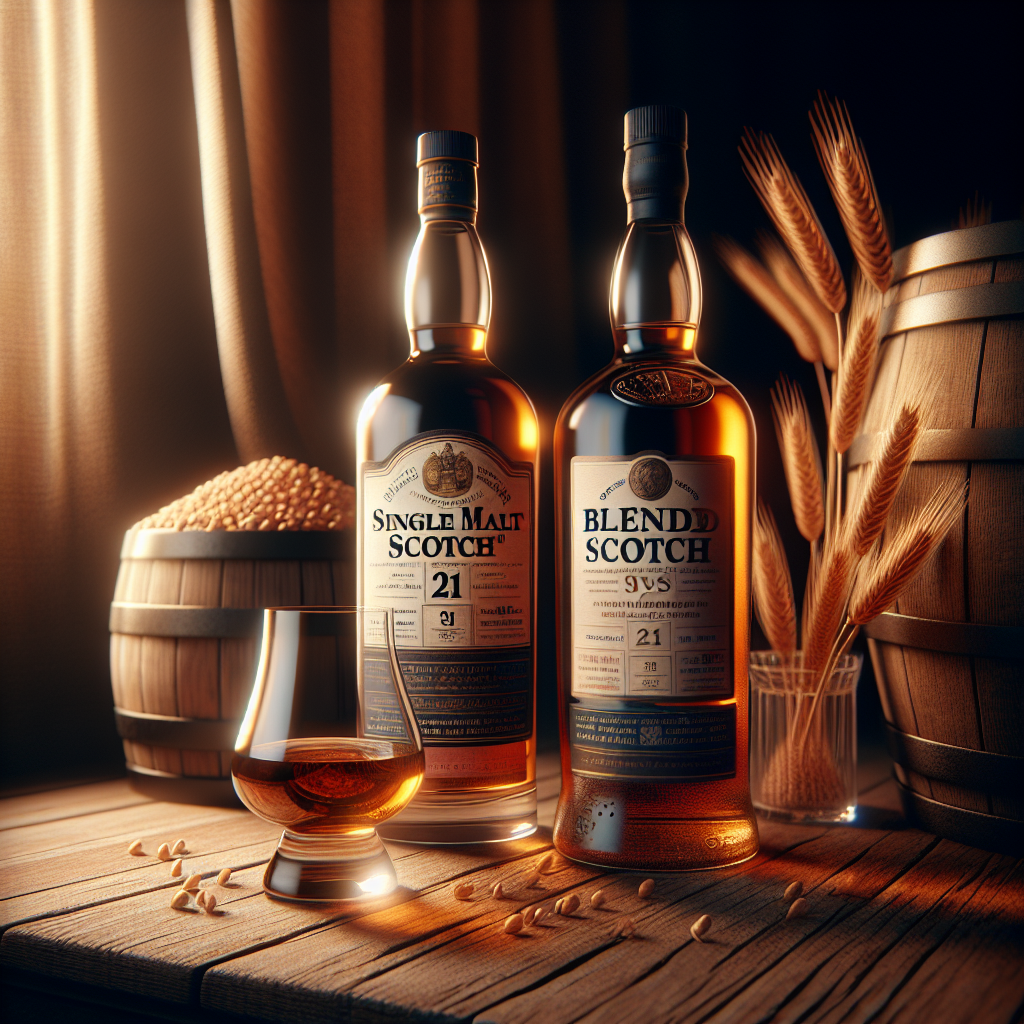The Nuances of Scotch: Exploring Single Malt vs. Blended Whisky
Scotland, a land steeped in tradition and rich with natural beauty, is known for producing some of the finest spirits on the planet—whisky. The craftsmanship that goes into each bottle reveals a tale of artistry, patience, and local character. Among the myriad of styles, two stand out prominently: single malt and blended whisky. Each represents the essence of Scotland yet tells a distinctly different story. What are the key elements that differentiate these two whisky styles, and what do they reveal about our preferences and palates?
Understanding Single Malt Whisky
Single malt whisky is often revered as the pinnacle of whisky production. Legally defined, it must originate from a single distillery in Scotland and be distilled from a mash of 100% malted barley. Rachel Barrie, a veteran master blender, eloquently points out the significance of these requirements. They ensure that every sip captures the unique characteristics of the distillery’s environment—be it the rugged Highlands or the lush Lowlands. The traditional copper pot stills used in the process are not just functional; they impart nuanced flavors and textures that are synonymous with quality whisky.
Aging in oak casks for a minimum of three years, though most often 10 to 15 years, contributes to the richness found in single malts. The type of cask plays a critical role in flavor development—they can be previously used for bourbon or sherry, each imparting its unique essence. The intricate interplay of wood, spirit, and time creates layers of flavor—notes of dried fruit, spices, and caramel often emerge, inviting enthusiasts to ponder each glass.
The Complexity of Blended Whisky
Opposite to the single malt’s exclusivity is the widespread phenomenon of blended whisky. Rather than a singular source, blended whisky is crafted by mixing multiple single malt and grain whiskies, often from various distilleries. Brands such as Johnnie Walker and Dewar’s characterize this style, showcasing a consistency and a collective harmony of flavors. Colin Gordon, a distillery manager, emphasizes that blends were foundational in introducing Scotch whisky to the world. This category caters to diverse palates, making it more approachable for both novices and seasoned whisky drinkers.
Grain whisky, which can include any cereal grain, is typically distilled in column stills. This method produces a lighter spirit, allowing blended whiskies to achieve a more balanced flavor profile. They often find their way into cocktails, appreciated for their versatility. However, this efficiency can result in blends that sometimes lack the complex aromatic profiles that single malts boast.
A Shared Culture, A Distinct Experience
While single malts revel in their regional identities, blended whiskies demonstrate the ability to unite multiple influences into a cohesive whole. Regions within Scotland—like Islay, known for its bold peaty flavors—contrast sharply with the lighter style of Lowland whiskies. Hence, a single malt whisky from Islay might evoke thoughts of smoke-filled bonfires by the sea, while a blended whisky could remind sippers of quiet reflections in their own homes.
The craftsmanship behind both styles begs contemplation. Single malts invite you to reflect on the landscape, the distillery, and the passion invested into every bottle. Blended whiskies, meanwhile, celebrate the art of bringing diverse spirits together, creating something approachable and enjoyable for all.
Whiskey Wisdom and Lasting Legacies
Whether you lean toward the sophisticated allure of single malt or the blended warmth of a well-rounded whisky, each sip contributes to a shared cultural legacy. The respect paid to the craft of whisky-making is a reminder of the patience and thoughtfulness required to create something extraordinary.
As we explore the differences, we also appreciate the similarities. Both single malt and blended whiskies play significant roles in the tapestry of Scotch whisky production, offering insights into the character and history of Scotland itself. Every glass tells a story, a story that entices us to pour yet another round, gathering friends or savoring solitude. In this enchanting world of whisky, the journey is as enriching as the drink itself.




































